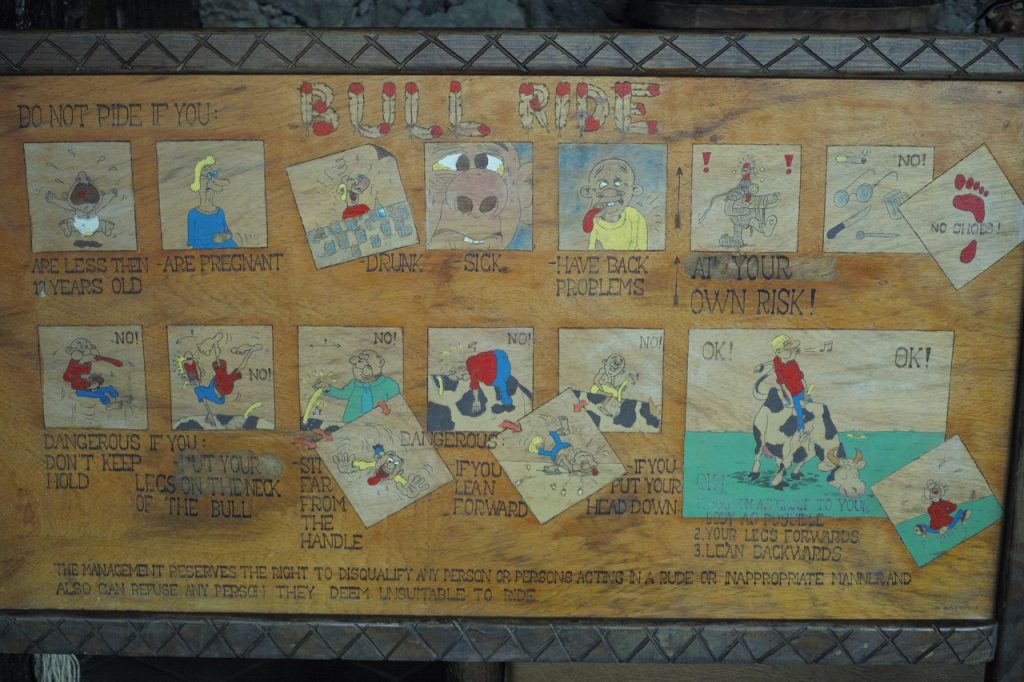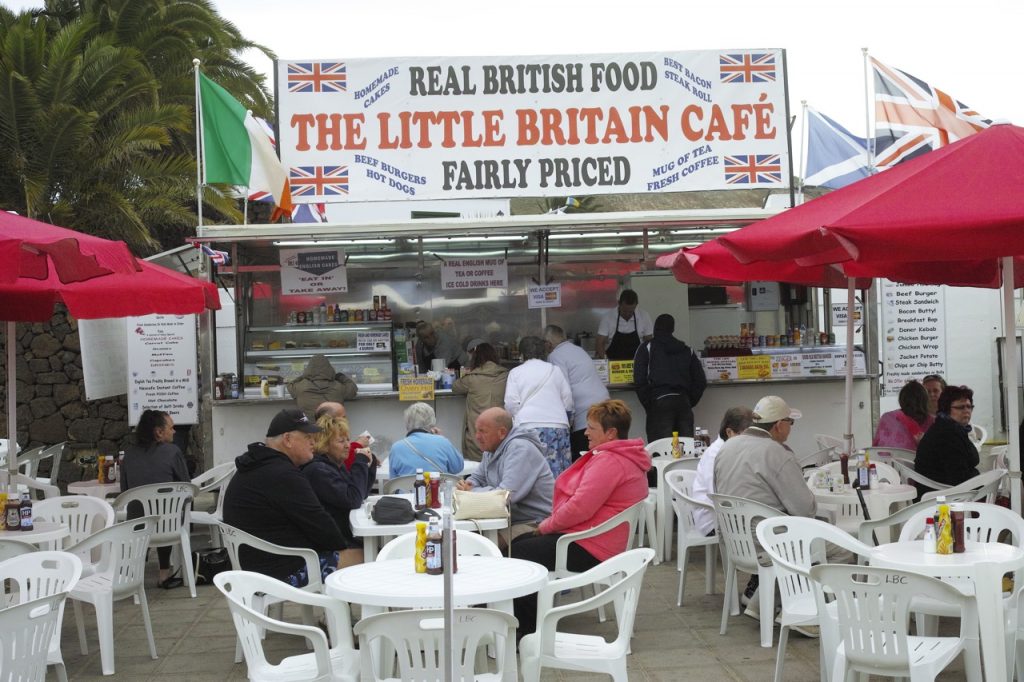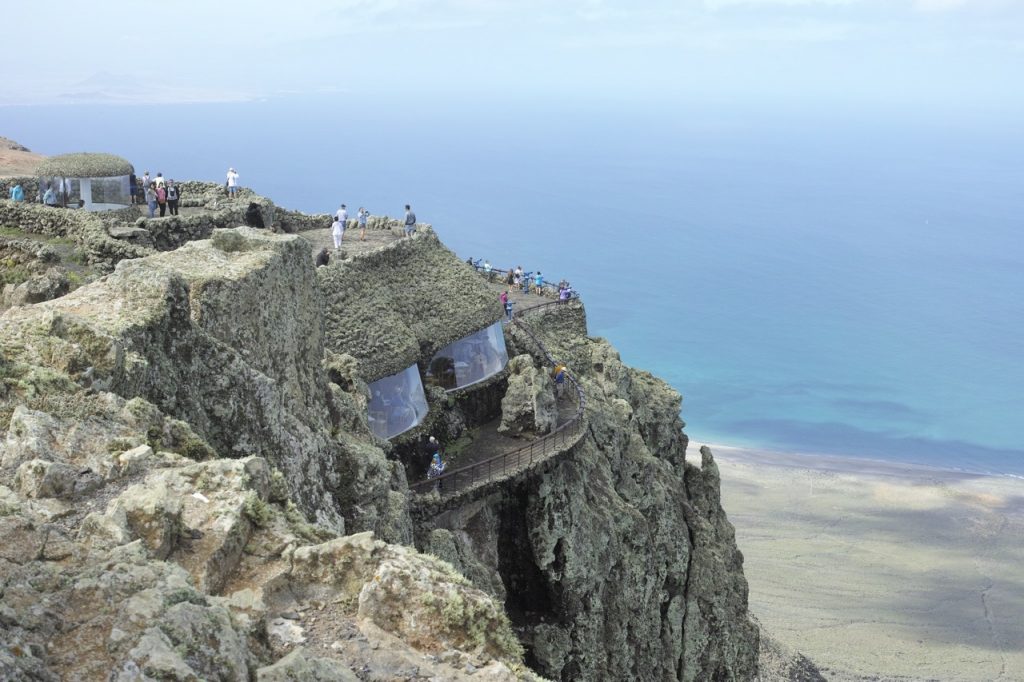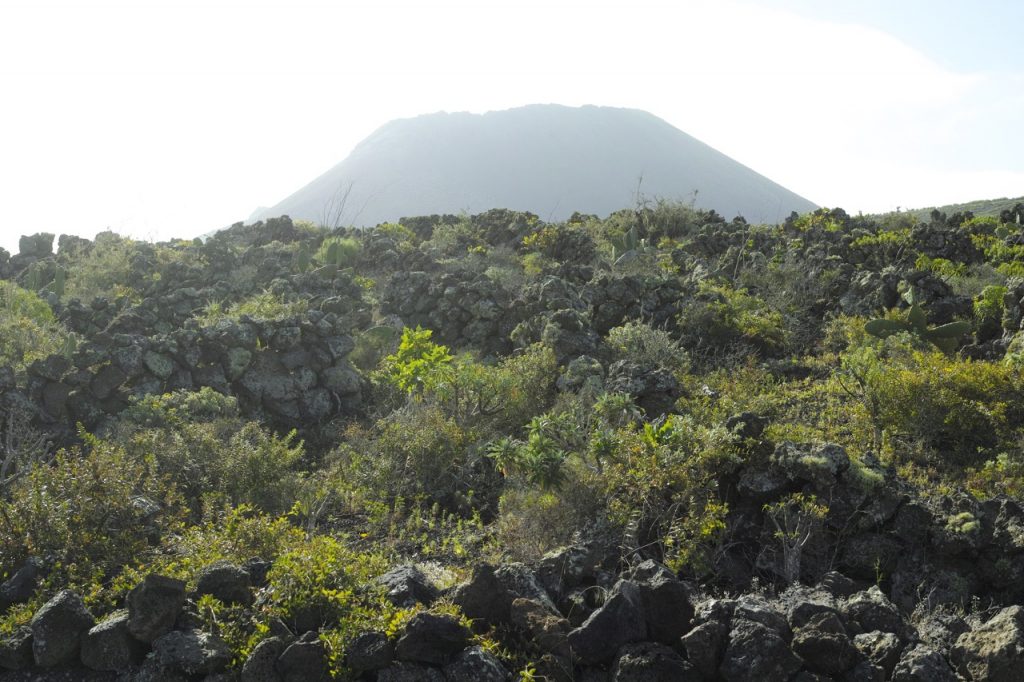When traveling to exotic locations, you will very likely encounter the anti-exotic. It’s the blessing as well as the curse of the modern world. We are everywhere, whether we like it or not. And right now we’re on Lanzarote, the Canary Islands. The sun is out, the weather is nice. The bulk of the tourists seems to come from the British Isles, for good or, if you ask me, bad.
There are more people in the shopping malls (containing the same stores as in every other shopping mall) than on the beautifully flower-adorned side streets and old harbour blocks which contain real traces of Canarian life. And the closer you get to the Ersatz apprehension of how things ”should” be, the more entertaining it gets. You get to see hole-in-the-wall restaurants with names like ”Idea Pizza” and store bannisters with impromptu poetry like ”Fish section – T-shirt”. Even fairly normal imperatives become twisted within this context: ”Try our suckling lamb!” Sometimes it’s merely a language warp, and one which is even more commonplace in Asia. Often it seems to be a result of a too hasty adaption to what’s perceived as desired.
Adaption is a sign of human intelligence (or so we’ve been told, and adapted to). The Lanzaroteans adapt to the exploitation of what they have and what we don’t: a warming sun and a staggeringly beautiful volcanic nature. The agricultural development of Lanzarote has been abandoned in favour of tourism, a tour guide informs me. Meaning: more Irish and English pubs to cater to all those Britons who desperately want to get away from home.
At the Rancho Texas Zoo outside Puerto del Carmen, we are thrust into a jumble of concepts. There’s ”normal” domesticated stock like hen & roosters, rabbits and birds of prey, and also white tigers, crocodiles and an assortment of snakes. And a sealion-entourage that pleases the crowd by spinning, gliding, singing and clapping their fins to that old and unlikely one-super-hit-wonder ”Cotton-Eye Joe” by Swedish country legends ”Rednex”. Pretty basic stuff in terms of global populism, but here placed within a weird Texan concept/theme. We are surrounded by American Indian Teepees, Ersatz totem sculptures, and a country & western fast food restaurant with country & western shows and the ever so generic mechanical bullride. Although the Canary Islands have much more in common with California look-wise, the Texan concept apparently works well here (it’s dry & hot, and that may be just enough).
The former capital Teguise houses a huge Sunday market that is jam-packed with tourists. Assorted handicraft and copies galore (with ladies’ bags marked Luiso Vuitno for Louis Vuitton, eminently stressing our dyslectic and disoriented culture), stalls for greasy English food, an assortment of Aloevera products, big African mamas ready to braid your hair to hell, ”Dulce de Transylvania” (”the vampire’s favourite candy!”), Nanobugs (”microrobotic creatures!”), the globally present pan-pipe-playing generic Indios (”Sounds of Silence” by Simon & Garfunkel was the tune I could stand to listen to just about half of). For more musical merriment, an old Brit had his own karaoke system right by a restaurant’s WC facilities, emotionally belching out ”Blue Suede Shoes” as the ladies in line looked at him uncomfortably. Being at the Teguise market made me realise that all these goings-on had nothing to do with this place specifically. I could be anywhere in the world. It could be anywhere in the world. The products are the same, the entertainment ditto and the tourists most decidedly so.
Back at the hotel with over-walked legs… The spa department advertises: ”Therapeutic, sports, various massages ”rituals” and consulting according to customer needs.” How do I interpret this remarkable message? That there is an on-site magician at the hotel, ready to provide consulting and rituals, or maybe just a massage? The main message seems to be that we are apparently not guests here but customers. Customers with needs.
At dinner. A British-generic couple sits down at the table next to ours. The young woman displays her mobile phone. Situation fairly normal. But she then transgresses the behavioural code by pressing play on her musical playlist. Modern pop in telephone treble streams out over our food (Calamares, whereas the brits eat fish’n’chips). People seem to accept this. I find it revolting but keep quiet because what is most remarkable to me is that the restaurant’s own sound system was actually playing Oasis’ ”Wonderwall” – usually the automatic cue for Britons to drop everything and sing along. This superimposition of British behaviour is as intriguing as it’s depressing. (Americans have an equally intriguing behaviour nowadays: they hold their phones in front of their mouths/faces, with the loudspeaker on, and then shout straight into it, thereby doubly infringing on others’ precious Lebensraum.)
Once upon a time Charles Darwin was denied access to study the unique flora and fauna of the Canary Islands because of a quarantaine. It may be that his ghost is extracting revenge by sending hordes of British victims of natural selection back to this very place. The revenge aspect can probably be traced even further back than that, to the dispute between Queen Elisabeth I and Spanish King Felipe II. When appearances can’t be kept up with neither stiff upper lip nor real soldiers (vide: the Falklands war), send tourists instead!
Am I complaining too much? In all fairness, the British presence has also spilled over into creative spheres (no doubt just as beer-drinking as the non-creative ones). Two Dr. Who films were shot on Lanzarote, for instance, as was the video for the Stone Roses’ Brit-epic ”Fool’s Gold”. And speaking of fool’s gold, the French can be proud of their petit-provocateur Michel Houllebecq, who wrote an entire novel about Lanzarote (mainly as backdrop for his own masturbatory fantasies – as usual). Nobel Prize laureate author José Saramago lived on Lanzarote between 1992 and 2010, a devout communist until death.
The artist César Manrique first hob-nobbed with Picasso and Miro in Madrid, and later on with various Rockefellers and Warhol in New York. But he longed for his native Canary Island so much that he moved back in the late 60s. He then worked hard at integrating the landscape and mindframe of Lanzarote in his art (paintings, sculpture and more). His international success helped make good PR for the island, and his amazing house/compound today serves as a well-visited museum. It’s a grand villa with one story above ground and the rest submerged in black volcanic rock. Trees were planted at the bottom level and today stretch through the floors/ceilings and up into the air. The minimalist garden, with its green bubbles of cactii against pebbled black soil, is enhanced further by Manrique’s own bizarre and often kinetic sculptures (Arman meets Tinguely meets Vasarely).
That’s about it for the island’s cultural notoriety, although it’s very unlikely that more than perhaps a percent of the visitors actually care. And although the locals are certainly proud of Manrique’s efforts (and rightly so) they certainly don’t seem to care too much that their customers don’t seem to care too much.
Nature is always the supreme arbiter of what is actually good and bad. Lanzarote is austere and minimalistically lush at the same time. Certainly not as floral or chlorophyllic as Madeira (farther north in the Atlantic and belonging to Portugal) but still with a bumper bougainvillea attitude. A great portion of the island is a national park, well kept and well protected. The entire island is a biosphere reserve region protected by UNESCO since 1993. There are 110 volcanos (the latest activity taking place in 2011!), dried out lava tunnels, steep cliffs, vineyards, cactii galore, breath-taking dry vistas but also terraced farming. Standing on top of the volcano La Corona, within the timespan of just a few minutes I saw six majestic falcons (in comparison: standing at the intersection of Calle Juan Carlos and Calle Reina Sofia in Puerto del Carmen, within the timespan of just a few minutes I saw six English/Irish pubs). Considering the exposure to wind and sun, this island could become an interesting place to truly develop ”green” energy and agricultural experiments, but as long as the main pecuniary infusion comes from tourism, nothing much will happen.
The logotype of Lanzarote, the Timanfaya Demon, was designed by César Manrique. It’s a supposed fire demon, which is not surprising if you consider the island’s volcanic history. Having a devil figure as your trademark always shows a great level of intelligence. The fire connotation may be the obvious interpretation, but a devilish sense of humour and a devious trickster psychology also fits very well with the big picture here. Palefaced northeners show up in the millions every year, and bring even more millions of desired Euros. If everything were perfect in every possible way, perhaps these not so perfect northeners (including myself, of course) actually wouldn’t come? Lanzarote, and the Canary Islands in general, may be a perfect marriage of stratification and ensuing exploitation. However, it requires no advanced analytic capacity to realise who’s being exploited. It is certainly not the locals, nor the islands. Imperialism has just simply gone diametric and the sun just simply keeps shining.











